Real thought leadership campaign examples: Spring 2021
We’re proud to work on some of the biggest and best thought leadership campaigns in B2B.
As we reflect on the last 10 years of FT Longitude and how thought leadership has changed in the past decade, we celebrate our most recent with these campaign examples of creative and inspiring thought leadership that engages, educates and influences hard-to-reach audiences.
Below we give a rundown of the latest campaigns we’ve been working in the last few months, including our editors’ views on what makes them unique.
With so much great insight, we’ve a lot to show you! If you’d like more information on any of the campaigns featured, please get in touch — we’d be delighted to tell you more about them and help find ways you too can innovate with your next campaign.
From Crisis to Opportunity: Redefining Risk Management
SAS
Hannah Freegard, managing editor
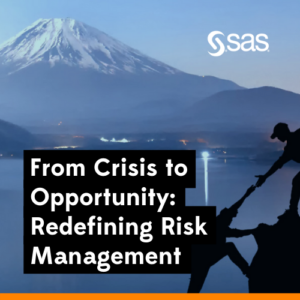 Global analytics software firm SAS has years of experience in the area of business risk, but more insight was needed in the role of technology and automation in risk – the banking industry in particular. Partnering with SAS, we surveyed 300 senior banking executives and interviewed four chief risk officers to help SAS lead the conversation in this critical business area and secure fresh business opportunities with new and existing clients.
Global analytics software firm SAS has years of experience in the area of business risk, but more insight was needed in the role of technology and automation in risk – the banking industry in particular. Partnering with SAS, we surveyed 300 senior banking executives and interviewed four chief risk officers to help SAS lead the conversation in this critical business area and secure fresh business opportunities with new and existing clients.
The data in this campaign example revealed that a group of firms – the Risk Management Leaders – have a more digitalised approach to risk management. They also report more accurate business forecasting and the ability to project balance sheets further into the future – and are more likely than the other firms surveyed to say their risk modelling processes are a competitive advantage. Drawing on the research findings, the report shares ‘Five steps to automated risk management’, which can help other firms make a strong start on their automation journey.
Sustainability shifts from business imperative to mission critical
Sodexo
Meg Wright, senior editor and head of audio
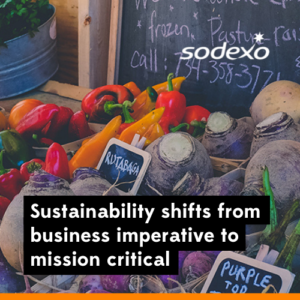 The work-life experience is changing. How, when and where employees interact with their organisations has undergone a huge shift in recent years, and has only been exacerbated by the events of 2020. To better understand this, Sodexo and FT Longitude have produced the first wave in a global content series that considers the role that HR, operations, facilities and food services will play in this shift.
The work-life experience is changing. How, when and where employees interact with their organisations has undergone a huge shift in recent years, and has only been exacerbated by the events of 2020. To better understand this, Sodexo and FT Longitude have produced the first wave in a global content series that considers the role that HR, operations, facilities and food services will play in this shift.
As employee expectations of their workplace and their employer change, sustainability has shifted from business imperative to mission critical. In fact, 73% of employers believe that sustainability policies and practices have become more important to their employees over the past 12 months. Looking ahead, this is likely to remain the case, and more than one-third (34%) of decision makers agree that an increased focus on sustainability will have the biggest impact on employee engagement in the year ahead.
Tax transformation trends survey
Deloitte
Joe Dalton, group editor
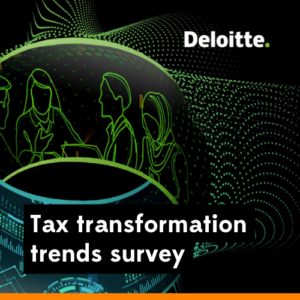 To help boost their credentials and add new insight to the conversation on the future of tax, in this campaign example Deloitte and FT Longitude partnered to shed light on future trends. A pulse survey of over 300 heads of tax and CFOs aims to highlight their role with greater clarity and gather their views on the future of the industry, allowing Deloitte to share actionable insights with their audience to further their client relationships and reaffirm their name as a key player in tax services.
To help boost their credentials and add new insight to the conversation on the future of tax, in this campaign example Deloitte and FT Longitude partnered to shed light on future trends. A pulse survey of over 300 heads of tax and CFOs aims to highlight their role with greater clarity and gather their views on the future of the industry, allowing Deloitte to share actionable insights with their audience to further their client relationships and reaffirm their name as a key player in tax services.
Among other trends, the report crucially finds that the tax function’s role in the strategic direction of firms is growing. Tax leaders must now have the resources and skills to provide deeper advisory support for their business counterparts. Areas such as digital business models are key to this, as 65% ranked this as one of their top three priorities for increased tax function support.
But whilst the tax function sits at the interface between companies and governments on broad, strategic business decisions, from growth opportunities to new ways of working, the report also highlights the internal pressures: resourcing; administration; data. These pressures will not disappear and must be balanced in order for the function to flourish.
Organizational Agility: The Roadmap to Digital Acceleration
Workday
Meg Wright, senior editor and head of audio
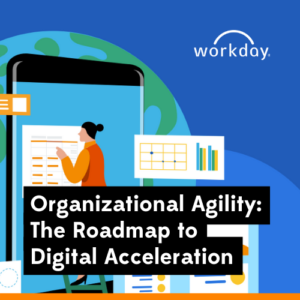 Workday knows that organisational agility is key for firms to be able to adapt and progress in their digital transformation, but many firms struggle with how to go about becoming agile. In this campaign example, to showcase organisational best practice, Workday partnered with FT Longitude to survey over 1000 business leaders, spearheading a content campaign at the centre of the firm’s global marketing and sales operations that continues to drive online engagement, meetings and conversations with prospects and clients.
Workday knows that organisational agility is key for firms to be able to adapt and progress in their digital transformation, but many firms struggle with how to go about becoming agile. In this campaign example, to showcase organisational best practice, Workday partnered with FT Longitude to survey over 1000 business leaders, spearheading a content campaign at the centre of the firm’s global marketing and sales operations that continues to drive online engagement, meetings and conversations with prospects and clients.
Building on the findings from our 2019 research partnership, which identified the core characteristics of agile organisations, this study set out to understand how firms are embedding agility in order to create a roadmap for others. In doing so it found a strong correlation between those firms that have embraced agile capabilities and a fast response at the onset of the pandemic. It also uncovered critical areas that organisations must focus on in order to overcome barriers as they continue down the path to agility. For instance, while more than half of organisations (56%) say their technology is compatible with digital transformation goals, just 16% say the same about their company’s culture.
ESG: Beyond the tipping point
Masdar
Sonja Caymaz, senior editor
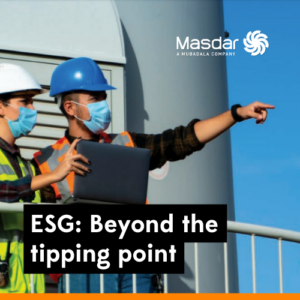 To ignite a conversation about the future of ESG investing, Abu Dhabi Sustainability Week and renewable energy specialist Masdar explored what motivates businesses to pursue profit with a purpose. In this campaign example, we polled over 500 senior executives and interviewed seven corporate leaders, including Siemens Energy, UPS and Unilever, to find out.
To ignite a conversation about the future of ESG investing, Abu Dhabi Sustainability Week and renewable energy specialist Masdar explored what motivates businesses to pursue profit with a purpose. In this campaign example, we polled over 500 senior executives and interviewed seven corporate leaders, including Siemens Energy, UPS and Unilever, to find out.
We found that 87% say that ESG performance is now one of their organisation’s core strategic objectives, and profit is among the strongest rationales for engagement: 65% expect to realise a financial benefit of ESG investing within two years. Shareholders are also a driving force for ESG across all sectors and regions. Nearly half say they are prioritising ESG because it is important to investors.
And Covid-19 has acted as an accelerator, reminding businesses of society’s fragility and their exposure to its disruption – particularly in an interconnected global marketplace. This learning process is feeding into businesses’ increased emphasis on ESG: 54% say that during the crisis they discovered that improving social and governance standards enabled them to make more of an immediate difference than they had previously realised.
Now or never: A new bar for sustainability
ING
Joe Dalton, group editor
 Since 2017, ING has partnered with FT Longitude to investigate sustainability and circular economy trends among companies and consumers. This year, to explore the influence of capital markets on corporate sustainability, we surveyed 100 institutional investors and 450 companies across seven sectors in a bid to further cement ING’s position as the market’s thought leader in sustainability.
Since 2017, ING has partnered with FT Longitude to investigate sustainability and circular economy trends among companies and consumers. This year, to explore the influence of capital markets on corporate sustainability, we surveyed 100 institutional investors and 450 companies across seven sectors in a bid to further cement ING’s position as the market’s thought leader in sustainability.
The survey and content programme in this campaign example seeks to answer key questions on what comes next for the sustainability agenda. And overall, the findings were positive, despite the report describing 2020 as “the year the far-fetched Hollywood disaster movie became reality”. The majority of companies (57%) now say they are now accelerating their green transformation plans, despite employee health and wellbeing unsurprisingly taking precedence over the next year. But sustainability does remain a key issue for all. With ambition, greater transparency and more sustainable finance initiatives, the coming years promise to be pivotal in the fight for the climate.
Will 2021 be the year of the hybrid workplace?
Fujitsu
Desi Kozareva, writer and editor
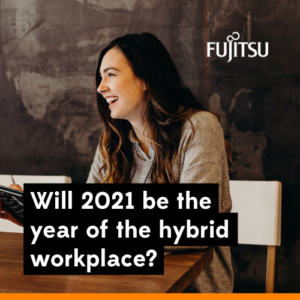 Working from home provides better work-life balance, increases productivity and reduces time spent commuting. But it is no panacea. So, with advantages on both sides, the answer must lie in a hybrid workplace. Fujitsu partnered with FT Longitude to investigate how firms can implement hybrid working, highlighting and saving the best bits from the worlds of home and office work. Drawing on the perspectives of experts in the field, this insightful campaign example puts culture, productivity and health under the microscope.
Working from home provides better work-life balance, increases productivity and reduces time spent commuting. But it is no panacea. So, with advantages on both sides, the answer must lie in a hybrid workplace. Fujitsu partnered with FT Longitude to investigate how firms can implement hybrid working, highlighting and saving the best bits from the worlds of home and office work. Drawing on the perspectives of experts in the field, this insightful campaign example puts culture, productivity and health under the microscope.
Talking to inspiring experts such as Gabriela Hersham, CEO of Huckletree and Andrew Davis, head of workforce and workspace services at Fujitsu, we used a blended research programme of qualitative and desk research to uncover new insight on hybrid working. With 88% of employees saying that they would like to continue working from home in the future, how can organisations support their workforces as well as backing their bottom line? Blending new and old tech, prioritising mental health and resetting corporate culture are all key. But will they be enough?
We’re here to help B2B brands to develop thought leadership that gets results. Get in touch to book your free strategy call with one of our experts.






 Back
Back


